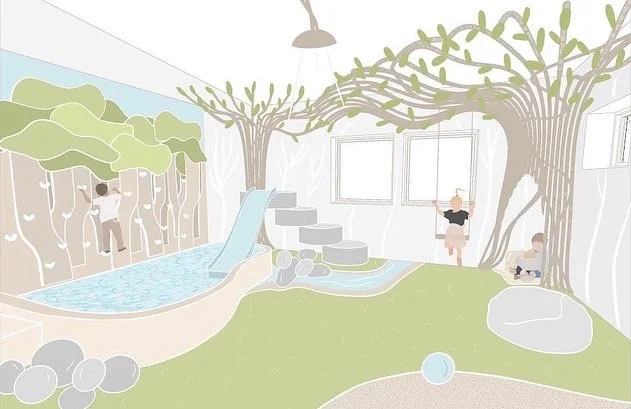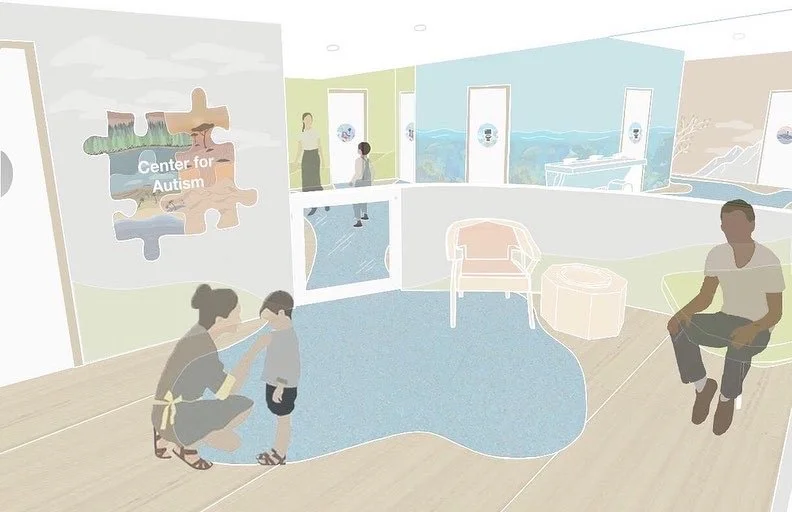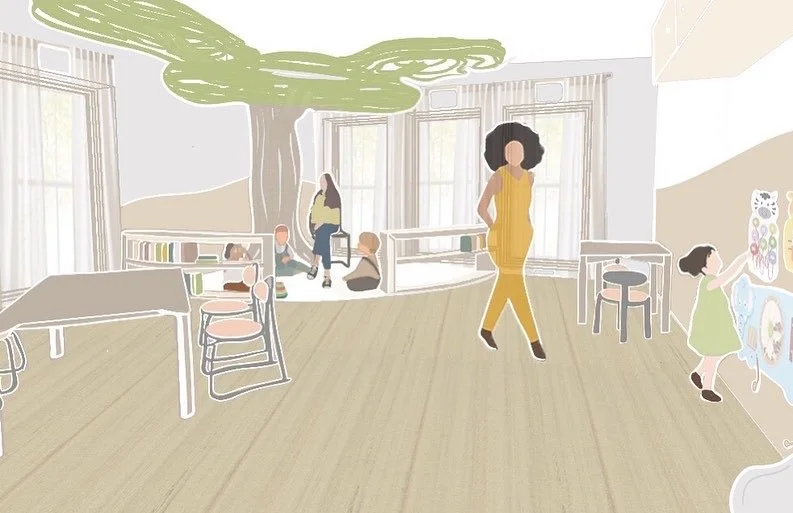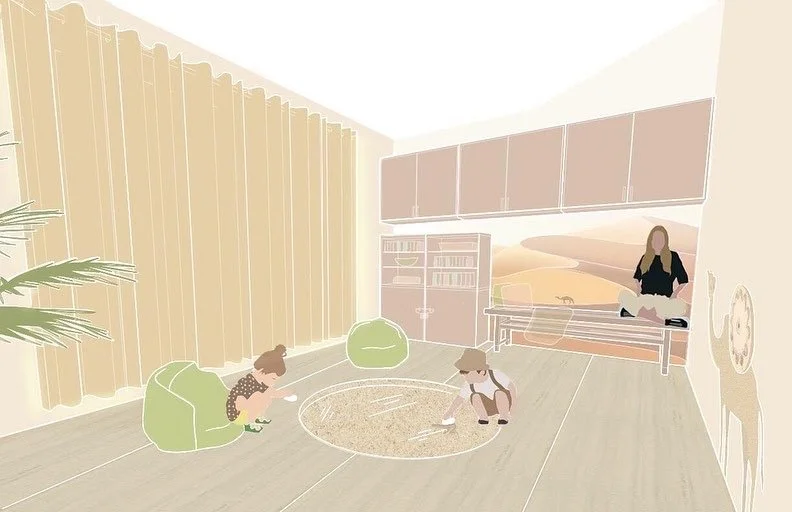Professor Tina Patel
Sombre Carleton
Ensemble Theater
Transcendence means to go beyond the limits of what is considered normal. Boundaries are analyzed both architecturally and metaphorically. The linear, rigid boundaries of the site seep into the interior, melding into concave forms representing the seamless connection among humanity that Ensemble Theater fosters. The continuation of grid-like patterns into the interior allows translucent resins and lighting to easily reflect off various surfaces creating a luminous atmosphere. This design also examines what communities are being pushed out of the boundaries of the site, to see how their voices can be included. The partnership with Voices of Cleveland is implemented into the programming to help address the issue of redlining, activating the street-to-scene experience of the patrons during the day and night. Transcendence through the design strategies of lighting, concavity, and floating expose beneath the surface issues of redlining while cultivating joy and inspiration for the occupants.





Aaliyah Young
Ensemble Theater
Through a partnership with Ensemble Theater, we have the opportunity to study theater and its impact on how we perceive society. This project tasked students with designing a space that embodies Ensembles Theater’s desire to create a space rooted in community and connection while addressing the current social issues related to gender, identity, inequity, etc. The theater becomes not just a platform for performance and celebration, but also an incubator space to address social issues resulting from past practices and policies.
Programmatically, the theater houses the expected, maker, and incubator place for women to flourish in the complex. This concept of celebration of the unprecedented is manifested by varying density of linear lines, contrasted in form, color, and texture that create these unexpected but special places, drawing attention to these spaces and issues. This allows for connections, engagement, and education between the community and women to be established.
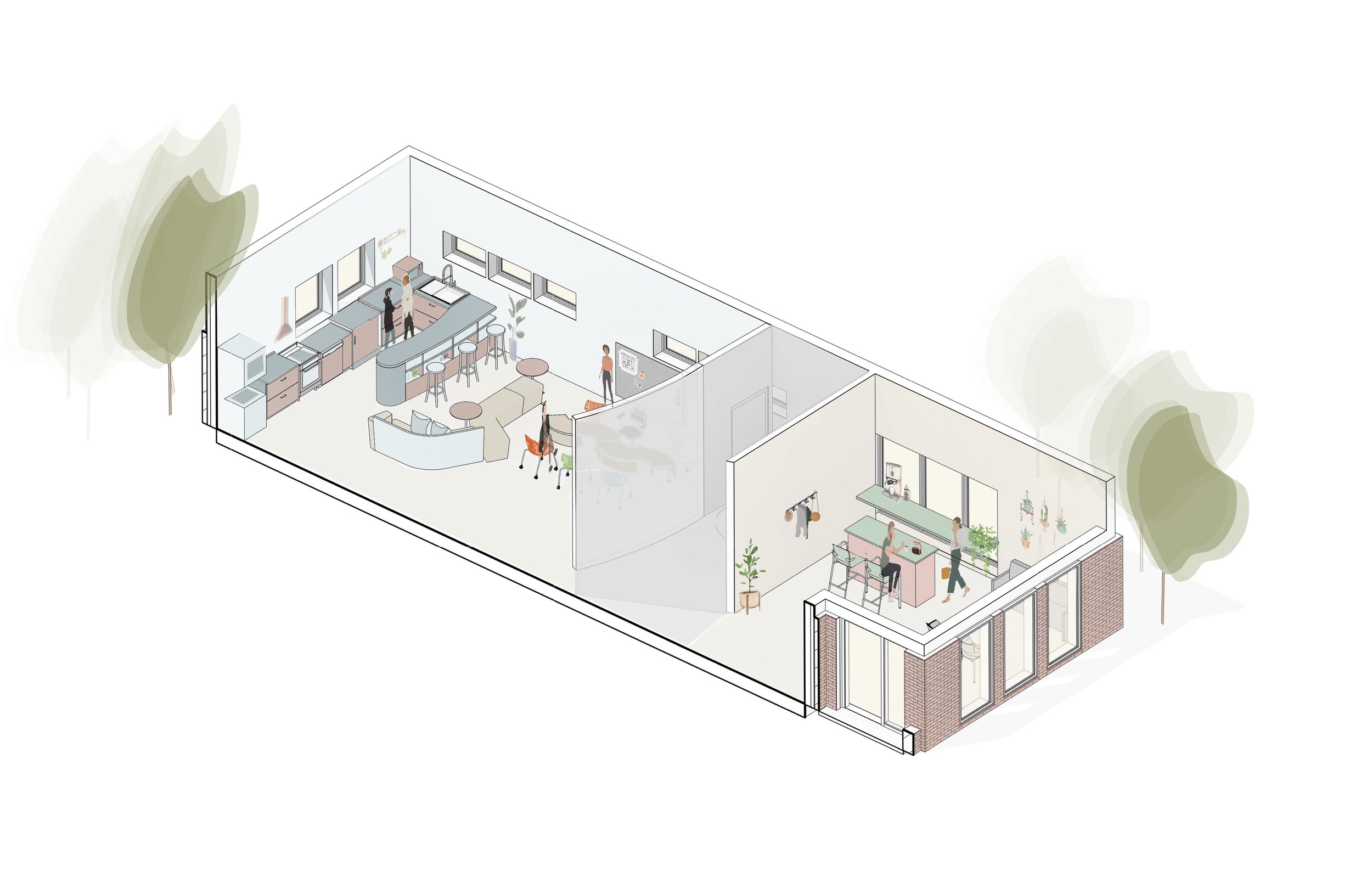
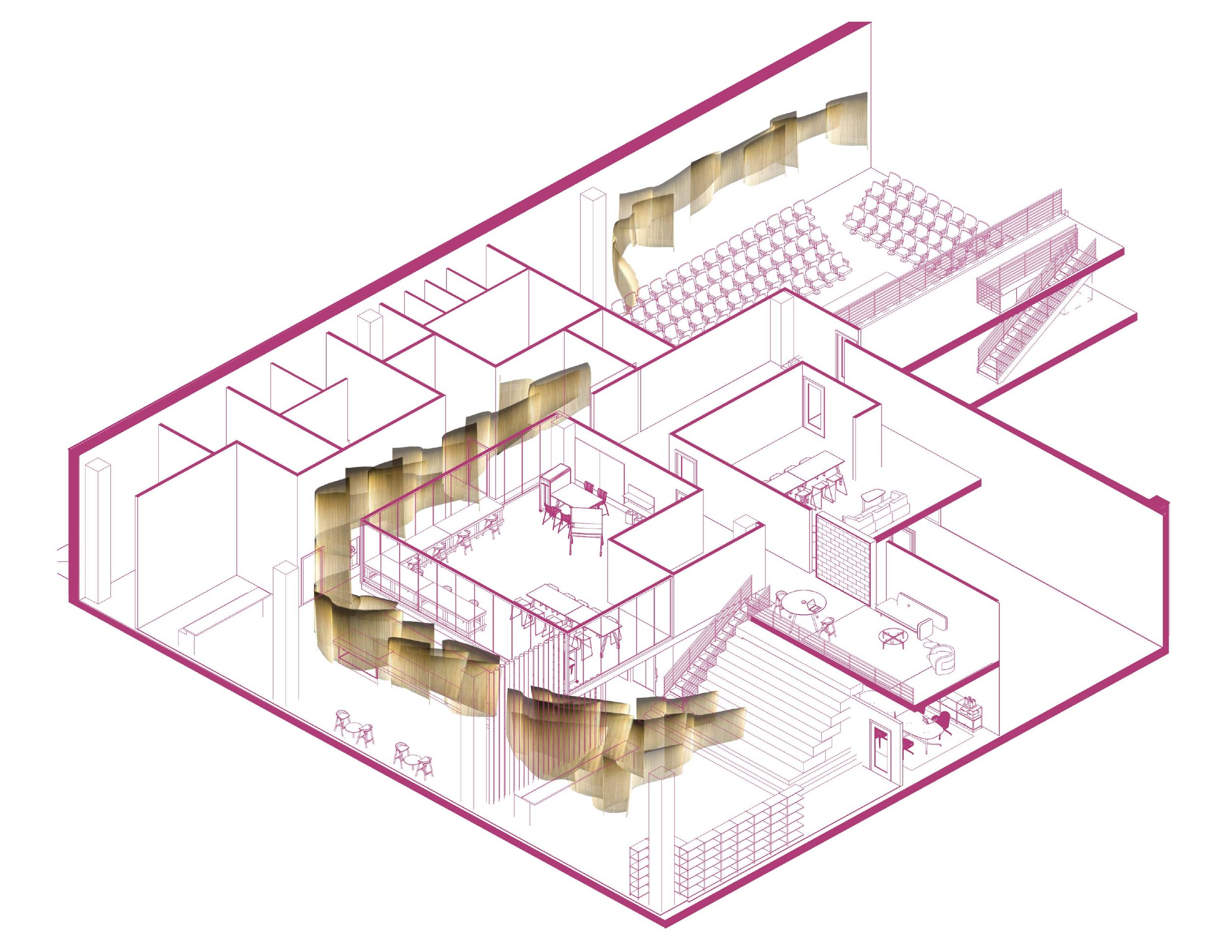

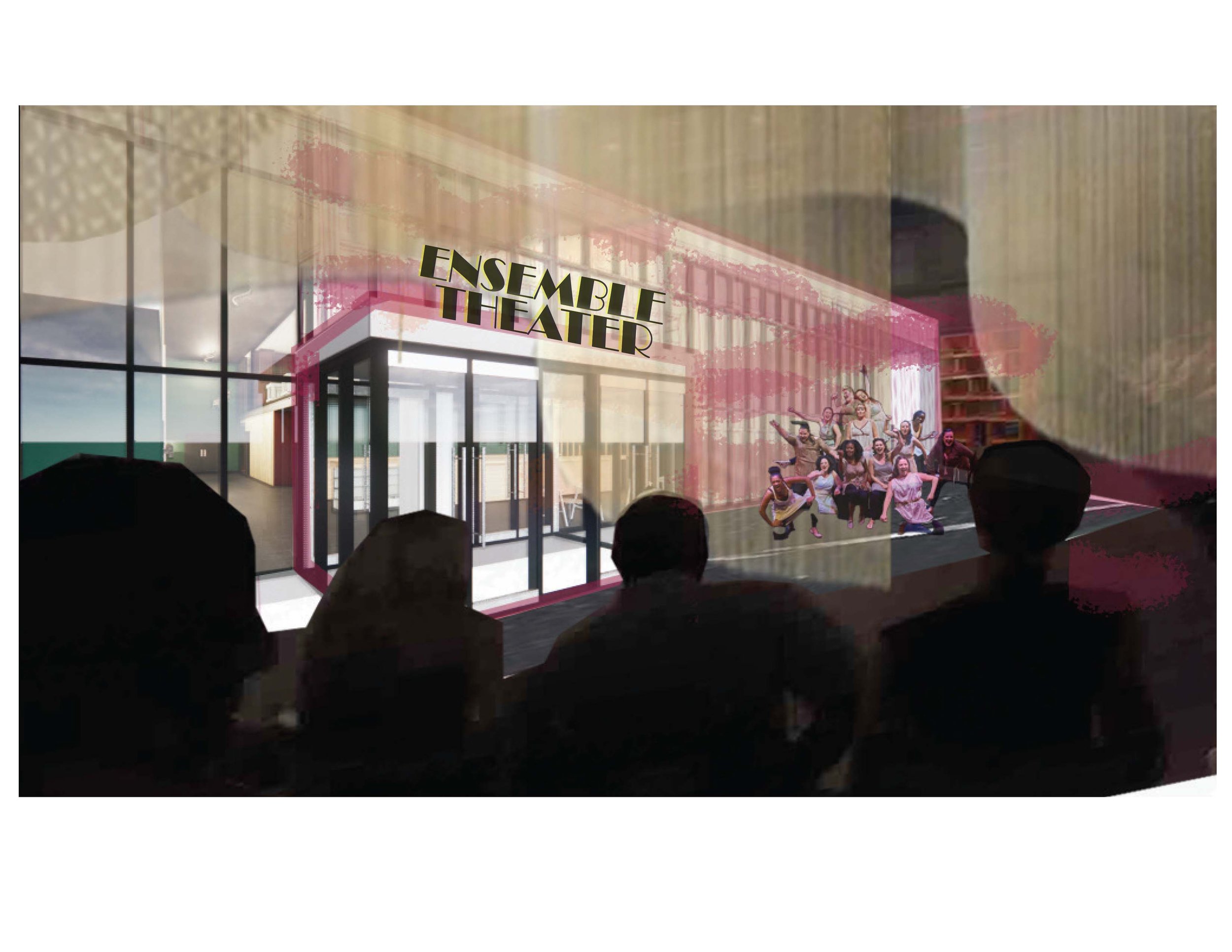
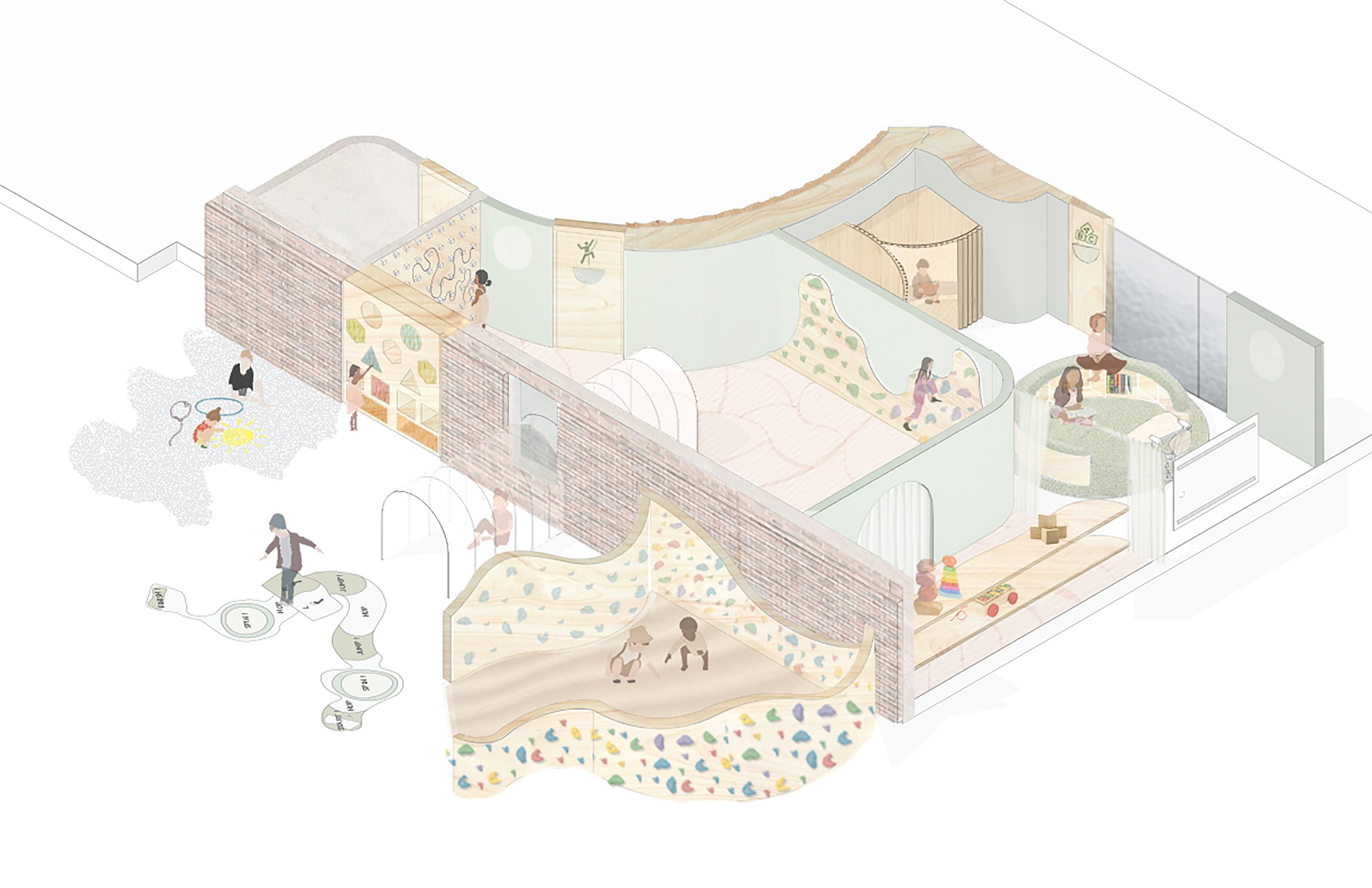
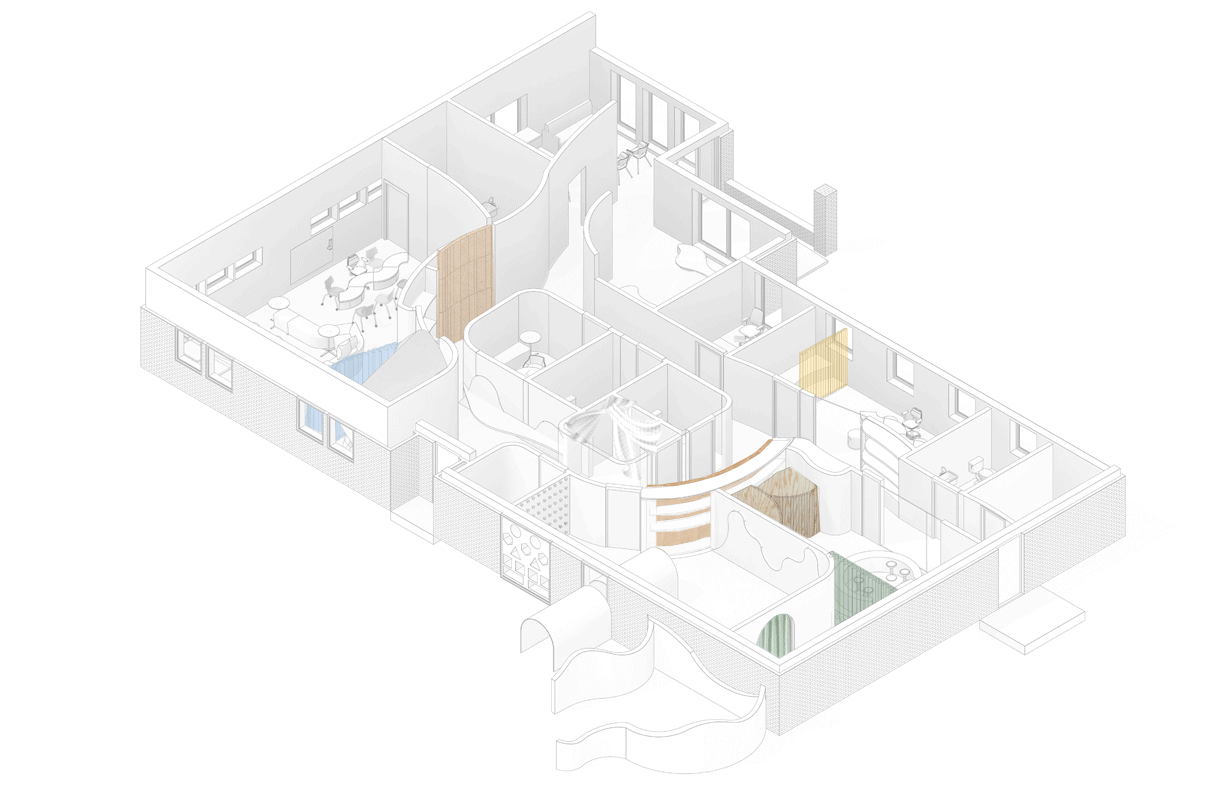

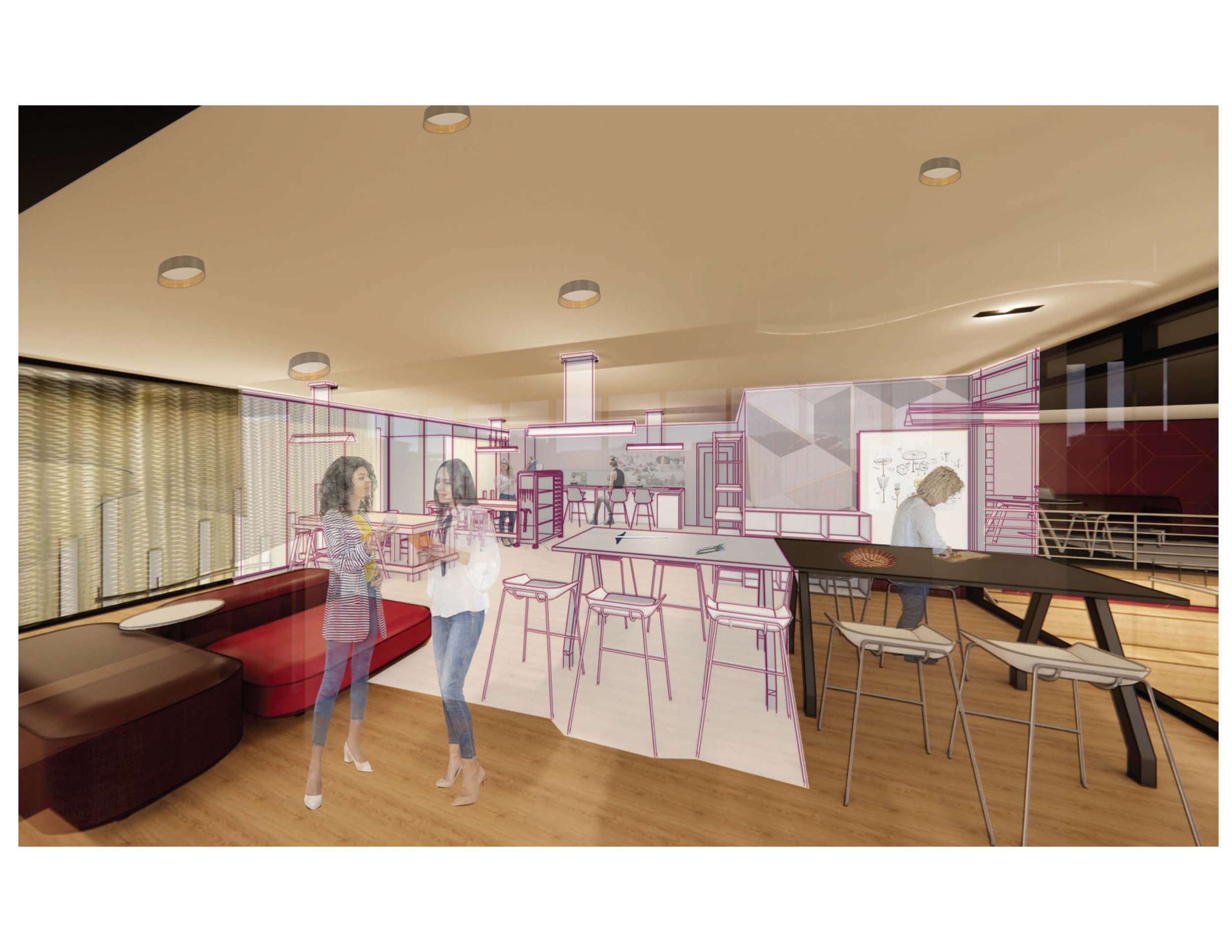
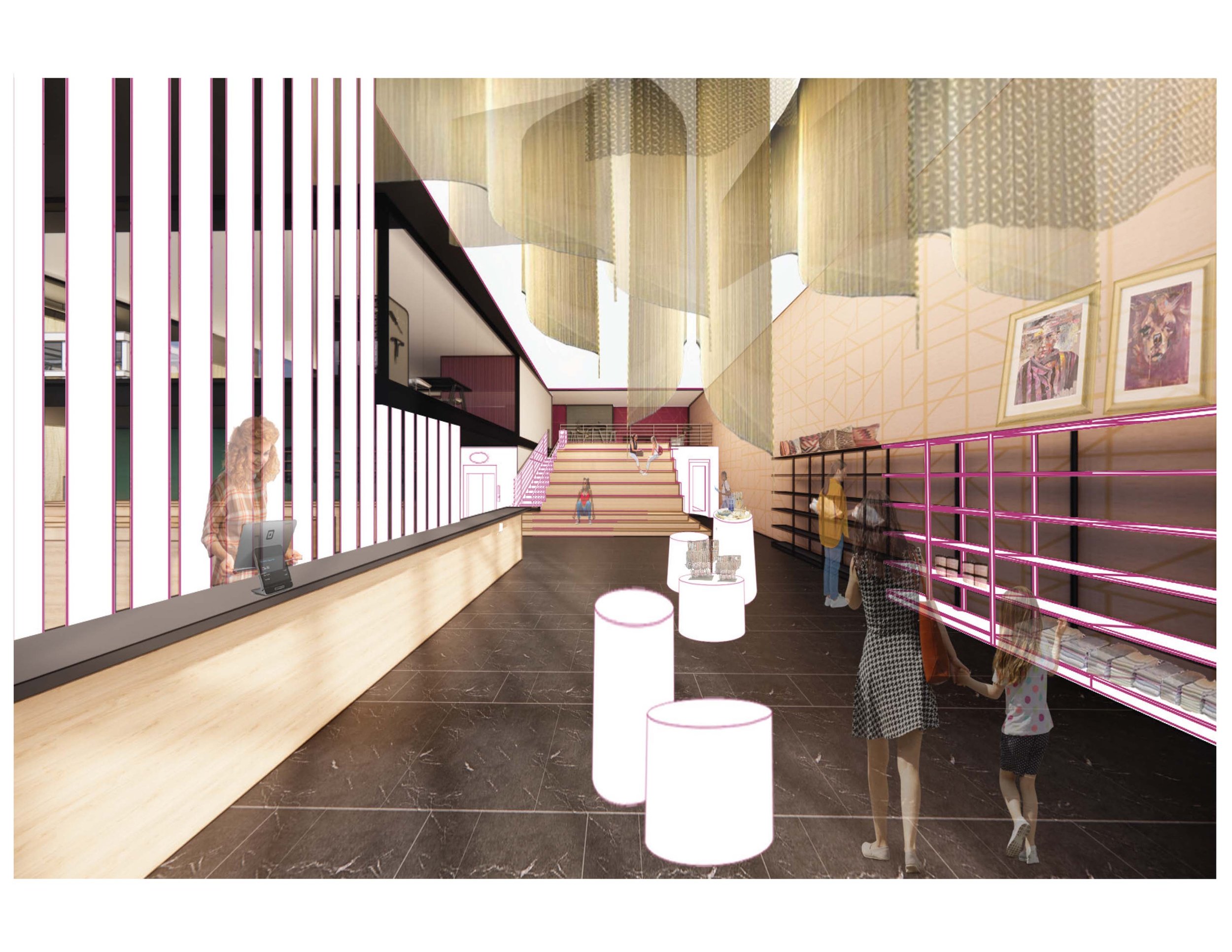
Lexie Dudeck
Ensemble Theater
Ensemble Theater, a non-profit organization, is dedicated to creating meaning in people’s lives. Their mission is to educate, activate, and include the community in their space. Ensemble Theater is seeking a new space to grow into and advance this mission. The new space provides the opportunity to program beyond the traditional theater, and inject energy, resources, and activities for the people and community.
The community will be immersed into Ensemble Theater, and the theater will immerse the community, by creating an open, inviting, and inclusive space – a space where music will be heard to draw you throughout the space with exciting movement, where a free and open conversation is encouraged. Ultimately the community has the choice, what they want to see, hear, and be immersed in. To achieve this, acoustics will be taken into consideration, where performance can and cannot be heard, creating excitement and mystery. Curved edges and layered elements create a visual and acoustical symphony. Like the harmonious complexity of sound, the moving and folding of space immerse the user in Ensemble Theater.
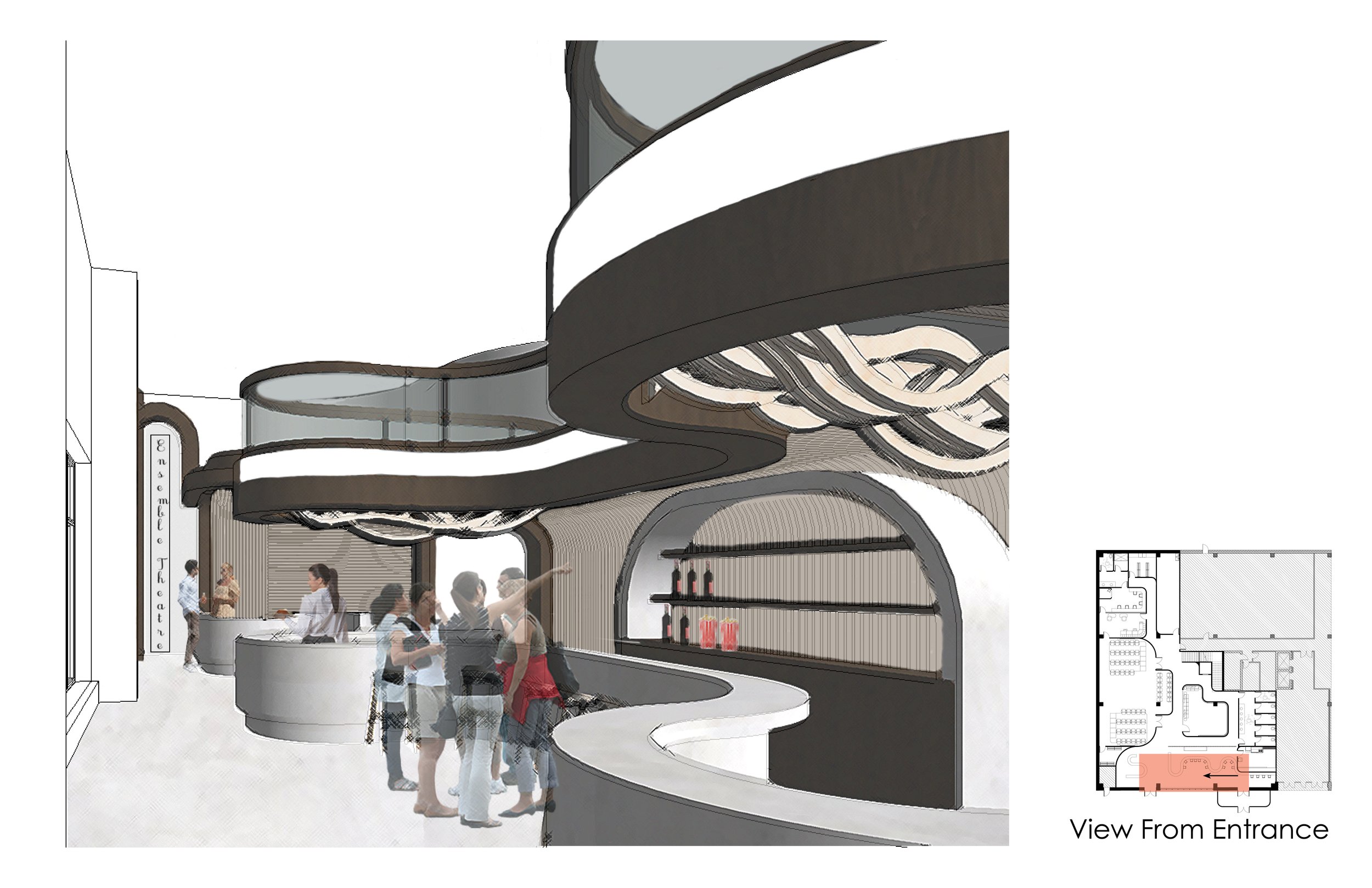


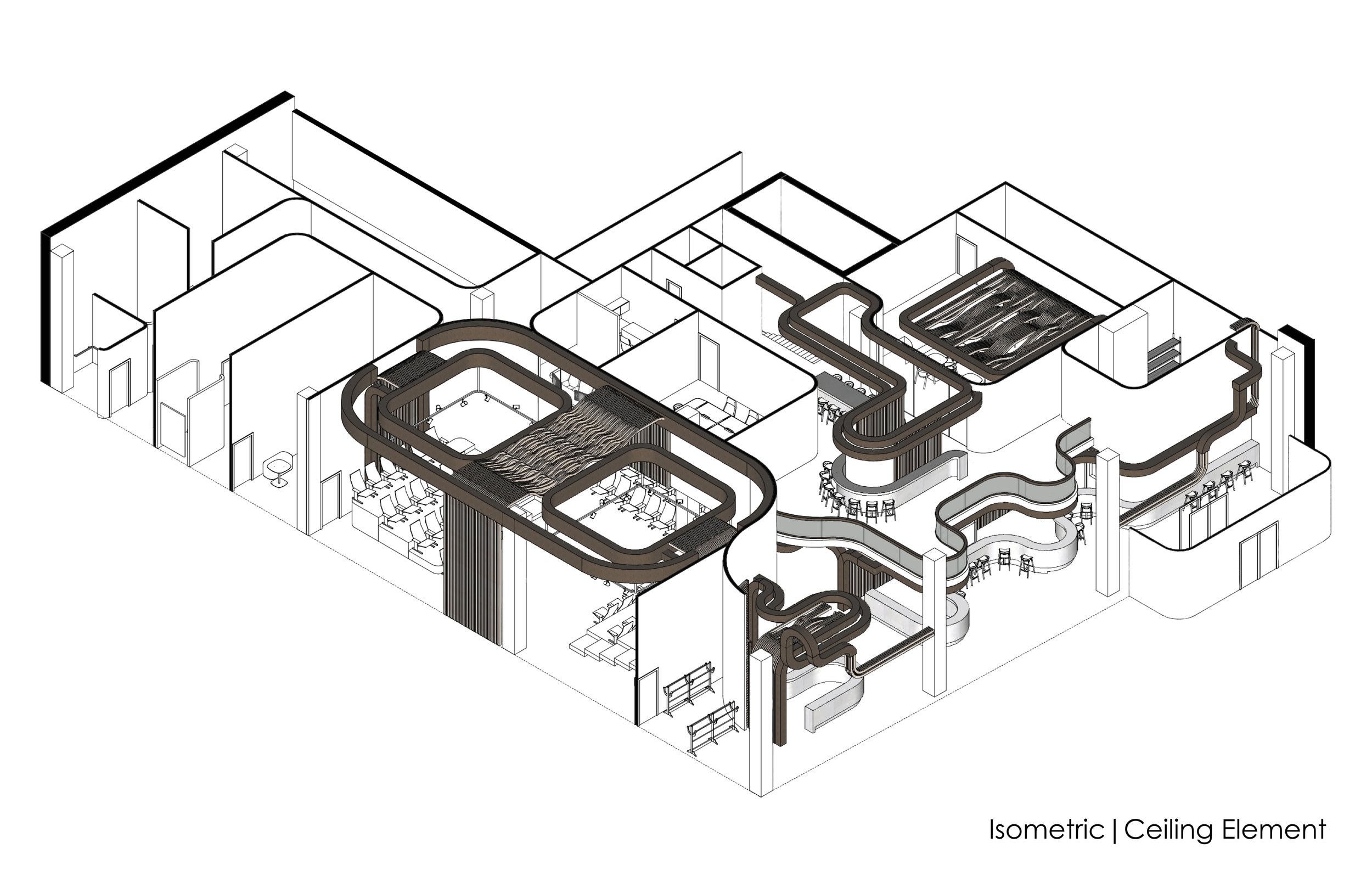
Professor Stacie Burtelson
Shania Davis & Sydney Marquis
Center of Autism
When considering how to accommodate children with ASD the importance of utilizing color and creating flexible spaces was discovered. This will allow for easier transitions of the program since ASD individuals often face challenges when it comes to communication and interaction of space. In order to provoke an inspiring learning environment without overstimulating the senses, the designed Center of Autism displays how continuous forms are capable of creating different zones or different functions for varying needs. Using boundary strategies throughout the space with design elements such as color, materiality, program distinctions, and clear but subtle transitions will create an environment that will meet the sensory needs of every student.
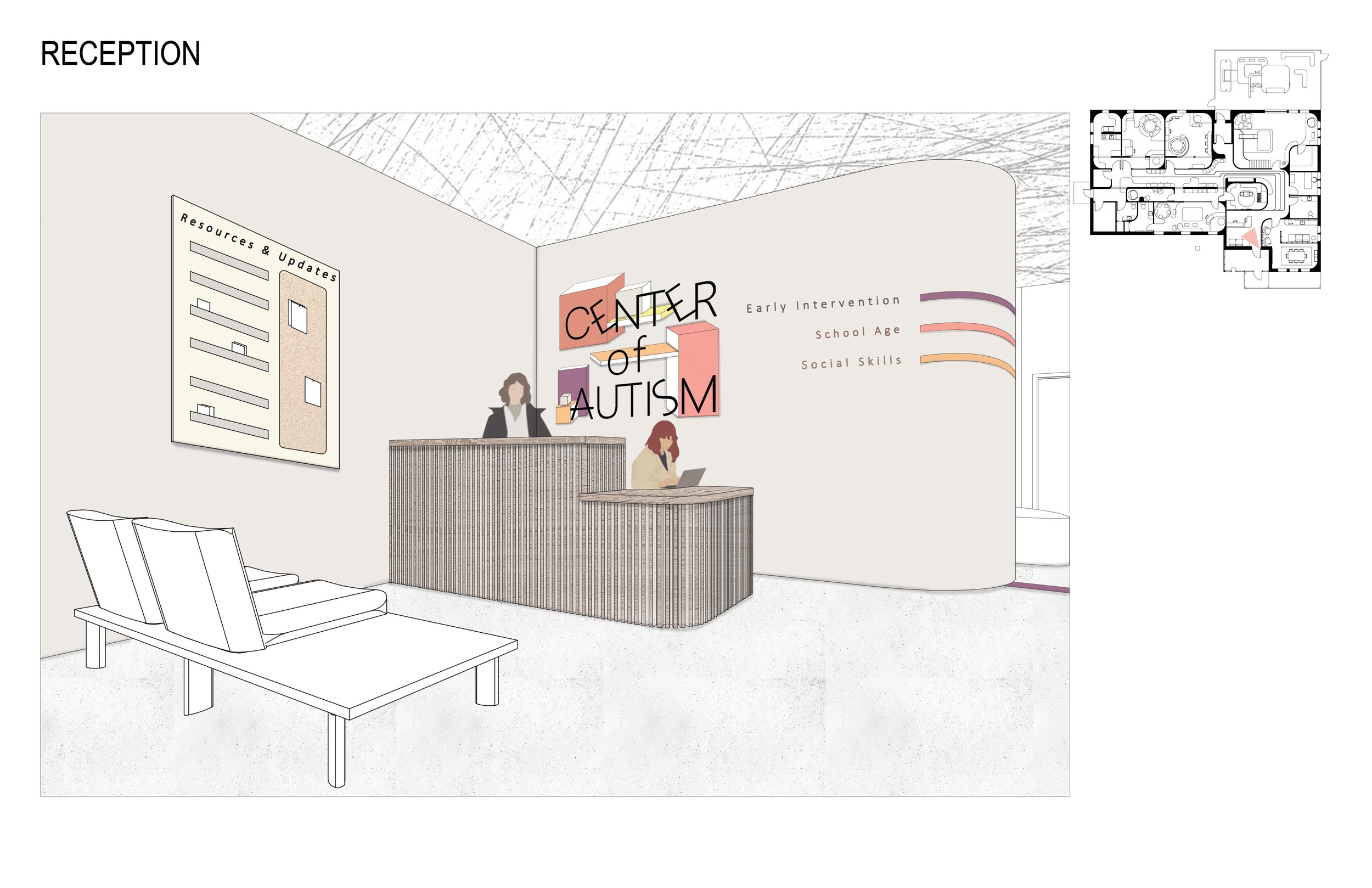









Katie Mills
Ensemble Theater - Pull Back the Curtain
Surrounding the site, the effects of discriminatory planning practices are especially apparent. Orange and Beachwood are predominantly white and wealthy, while Warrensville Heights is predominantly black and impoverished. The large population of older adults in high-paying positions in Orange and Beachwood directly relate to younger adults in low-paying positions in Warrensville Heights; their professions overlap, making mentorship a perfect way to bring them together. To break down the systemic separation between the communities, the design takes ownership of the symbolism of a theater curtain: it’s a window to another world, a malleable divider that builds anticipation. During the day, a mentorship program facilitates “behind the scenes” healing, bridging the generational socioeconomic differences in the area. At night, Ensemble’s performances bring relevant social issues to the forefront of a privileged community. The use of the curtain tells visitors to pay attention to the work being done at Ensemble Theater.








Paige Potter
Ensemble Theatre
The theater is a tool for storytelling and transporting the audience to an unfamiliar world. Strong emotions and passionate stories allow one's imagination to run wild. Earthbound paracosm is a natural phenomenon that facilitates the creation of an imaginary world within one's mind. To encourage this mental exploration at times when the theater isn't performing, the space will act as a library, allowing the occupants to continue their exploration of imagination, just in another medium.
An Earthbound paracosm. Paracosm is a word used by psychologists to explain an extremely detailed imaginary world that a person can create in their mind. Earthbound paracosm brings that imaginary world to a place that is not man-made, but a truly natural first-hand experience.









Professor Mayrah Udvardi
Skylar Zucal
Ensemble Theater: A Space of Your Own
When starting this project, the main goal of the client, Ensemble Theater, was to have a multipurpose space. Ensemble theater mainly uses their space during the evening hours so how they can maximize the use of the space during the day was important to them. The location of the theater is in an upscale, mixed-use area of Orange, Ohio and its upscale storefronts create a non-inclusive environment to lower income families. By researching the income levels and common programs of crossover within the surrounding communities through mapping, I was able to create my concept. My research revealed that a co-working space would bridge the gap between low- and high-income levels and utilize the space during all times of the day. Allowing one to create a space of their own maximizes opportunity and allows individuals to leave their mark not only within this space but also within the community.
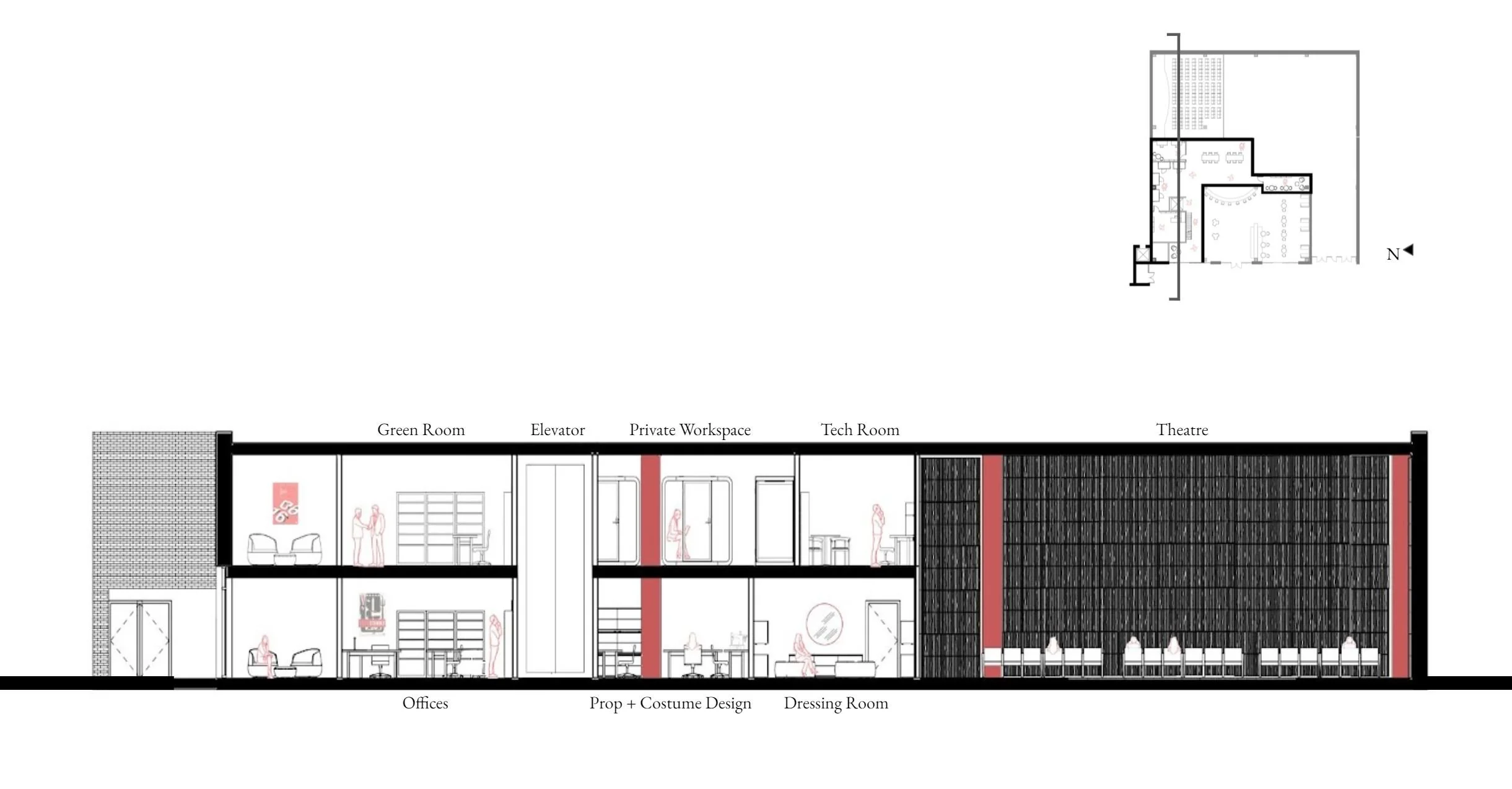
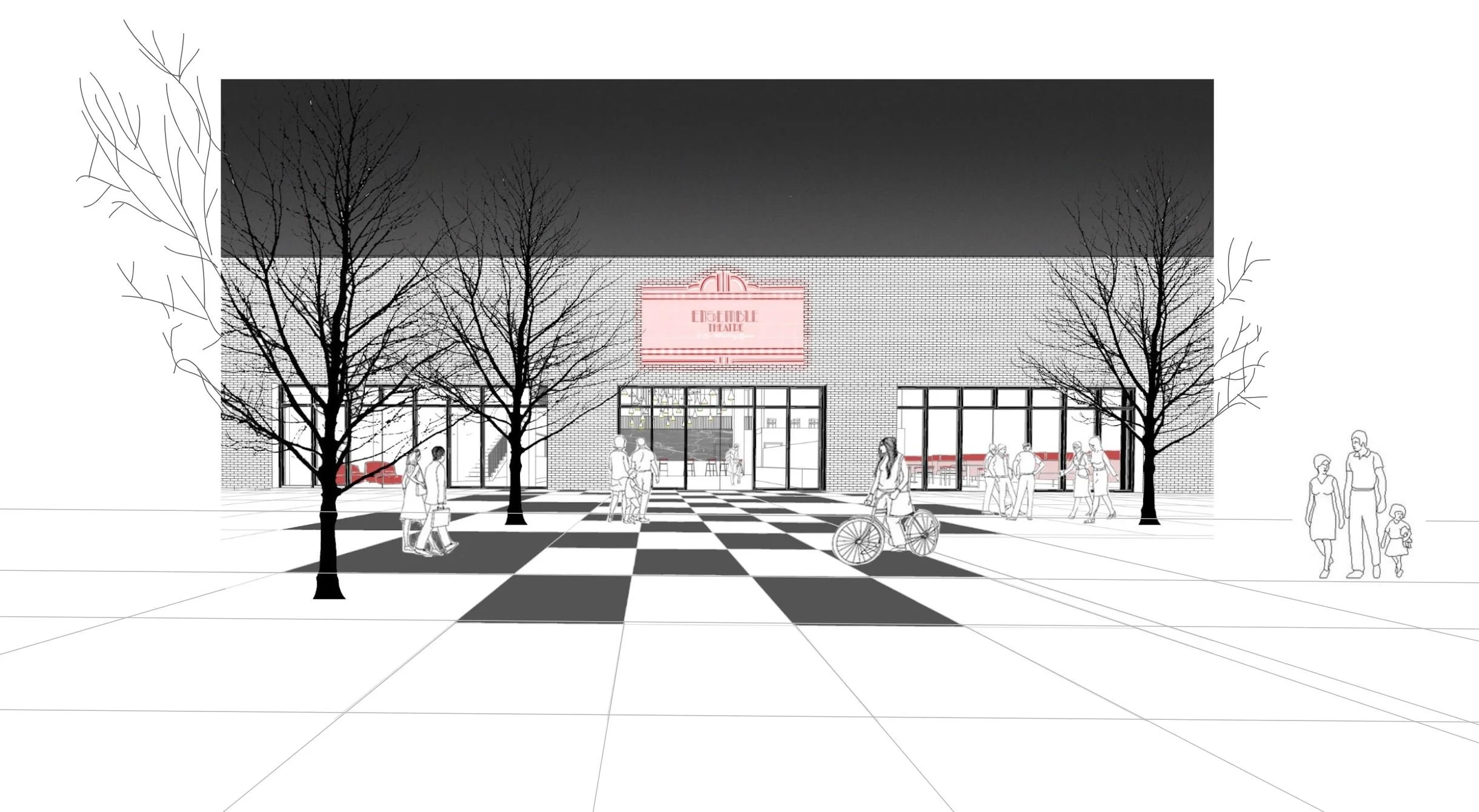
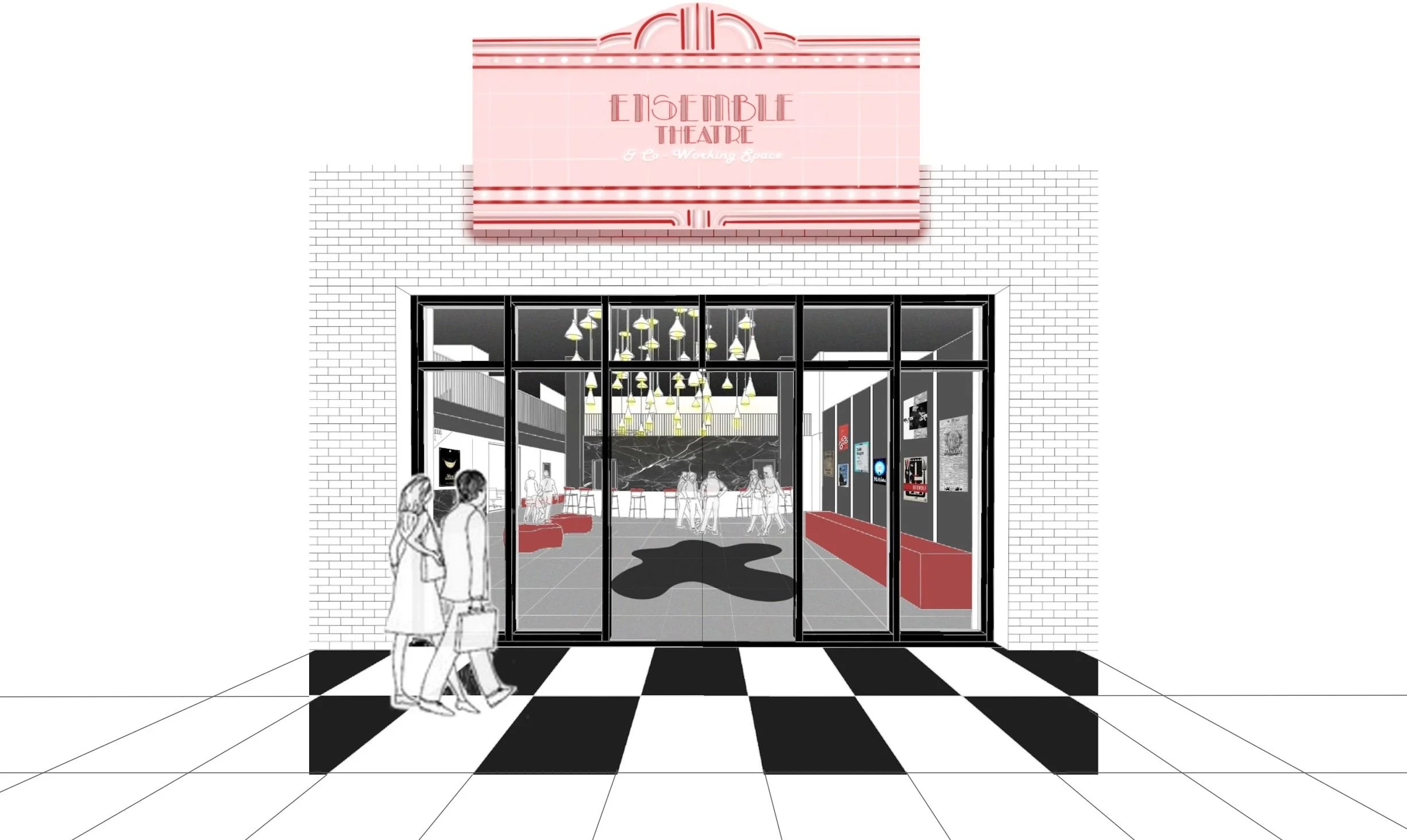
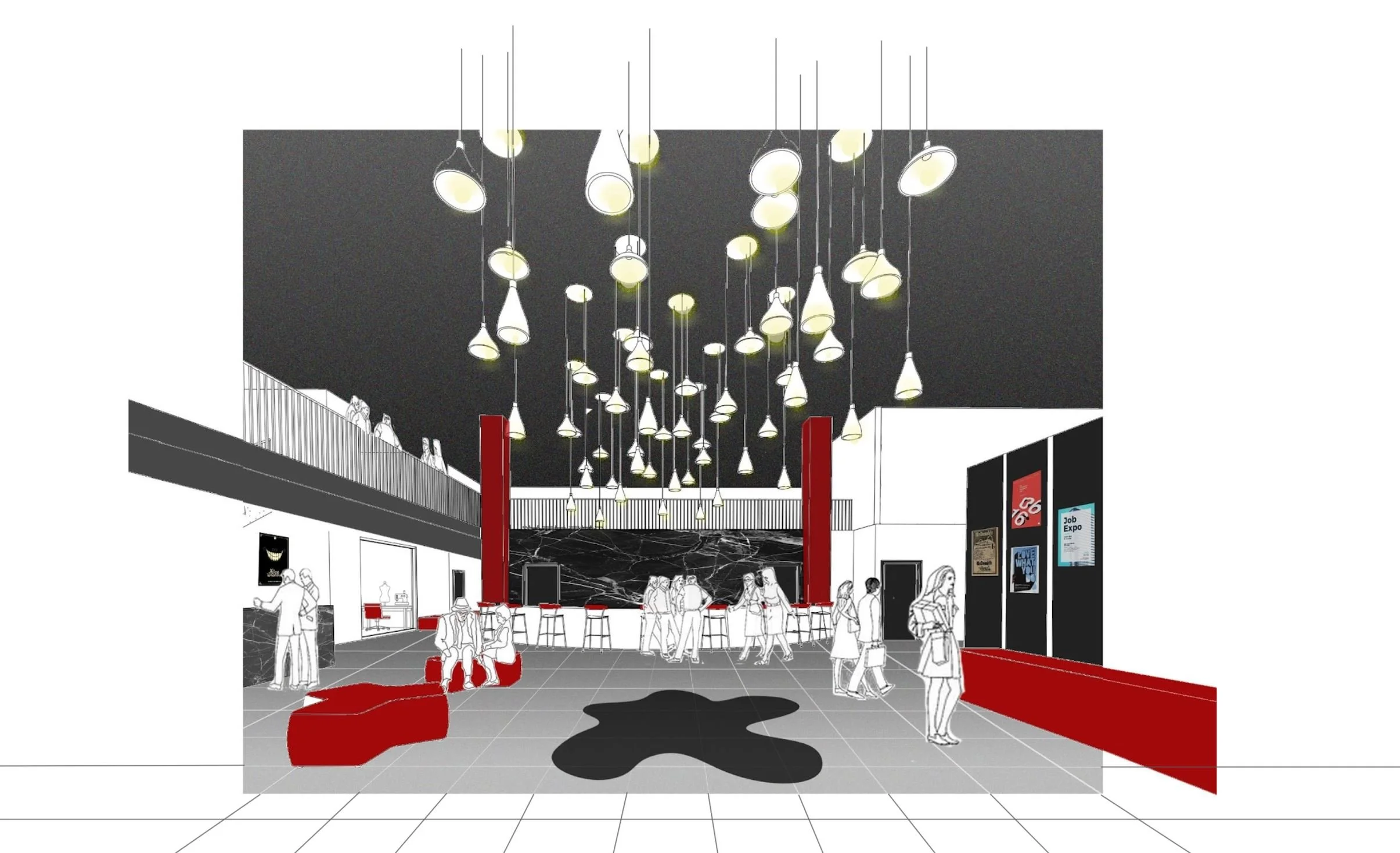
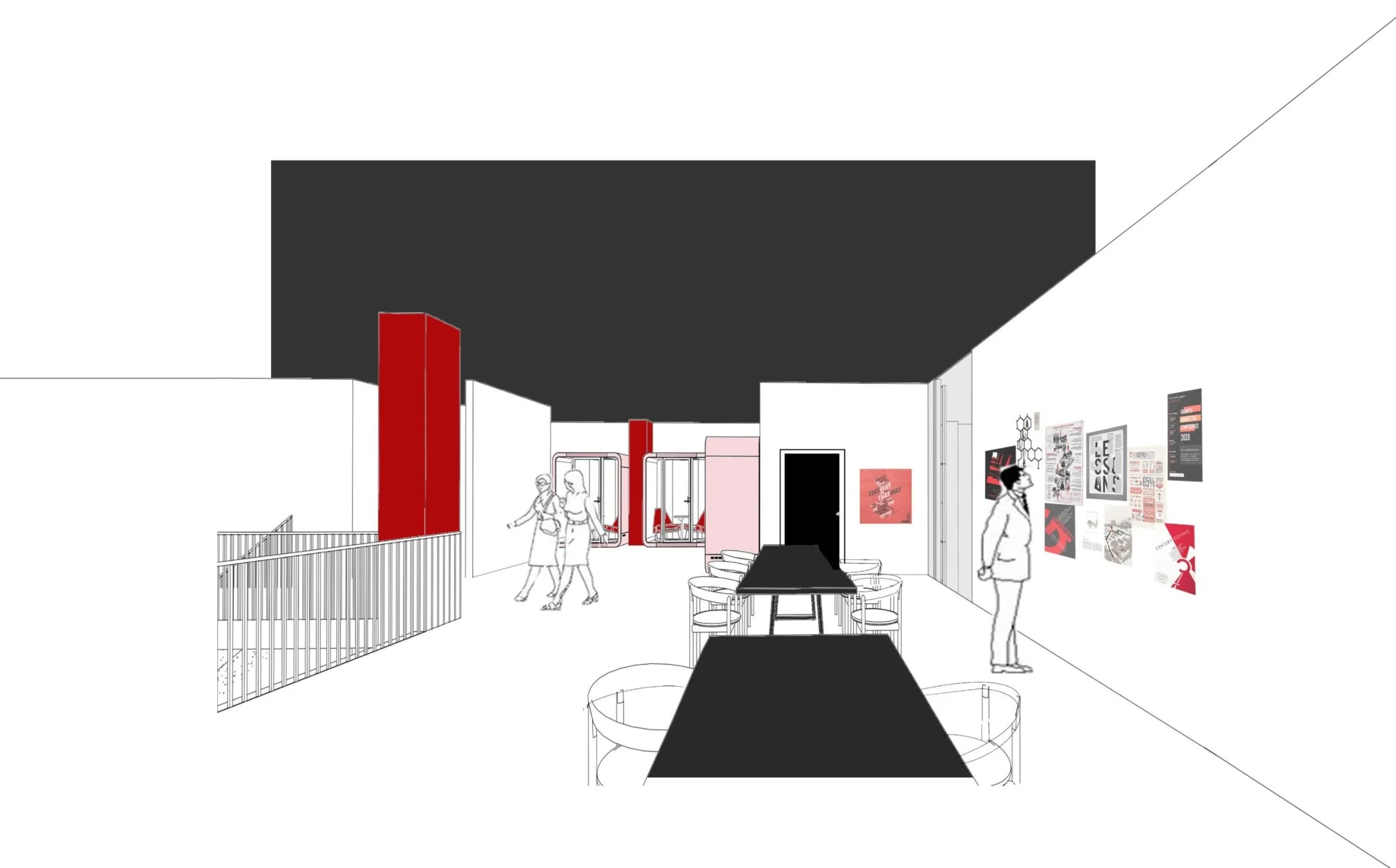
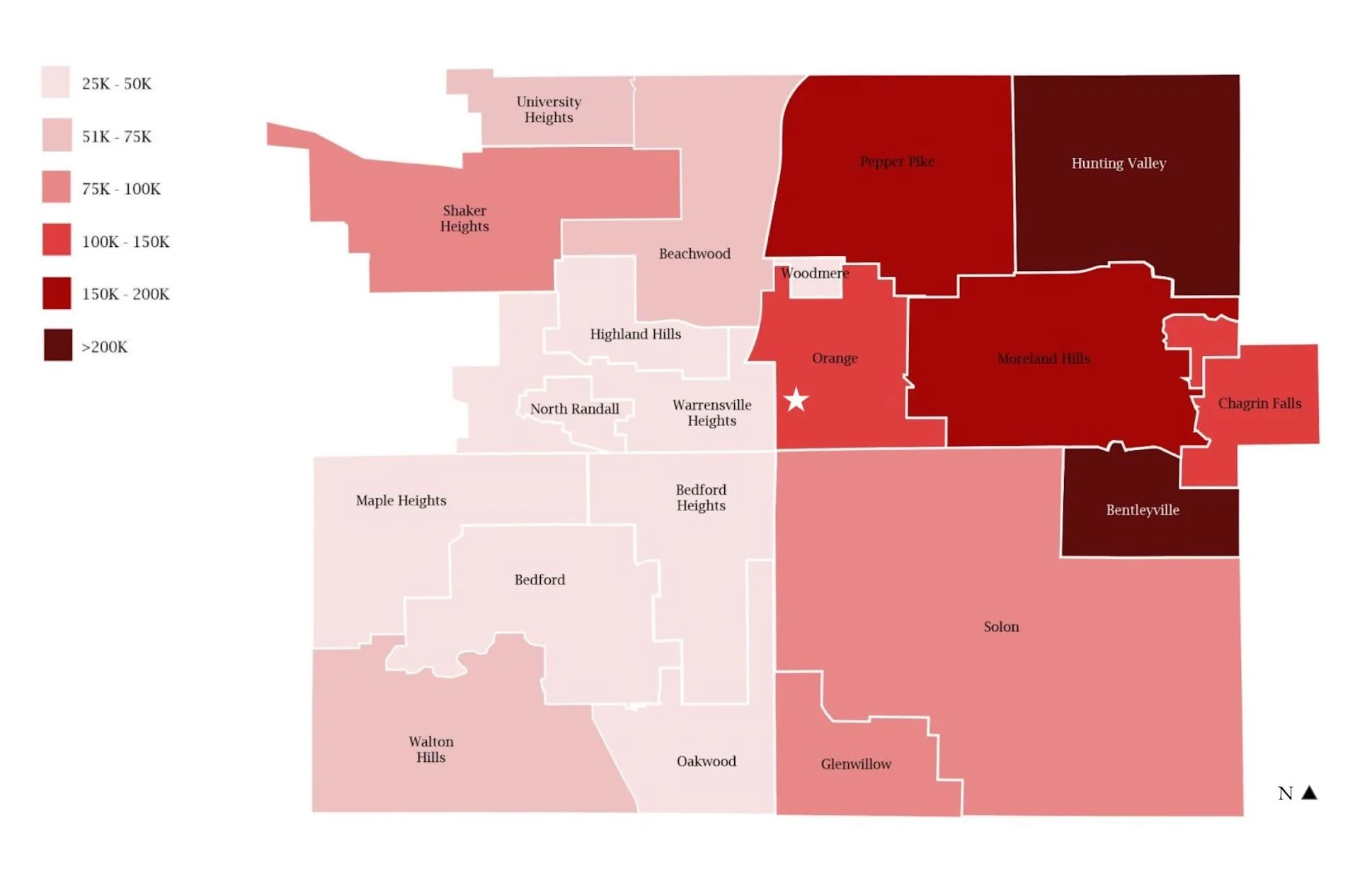
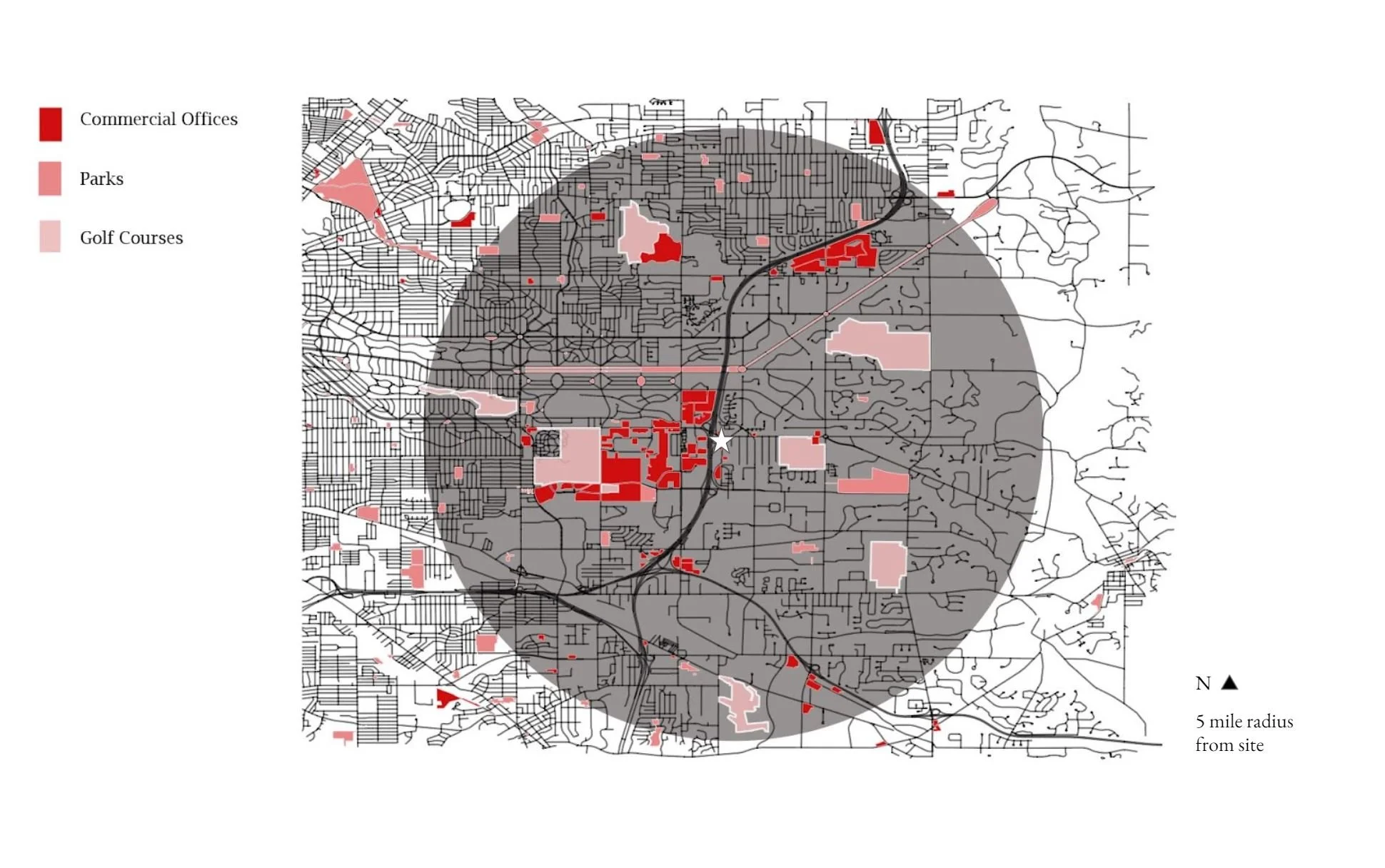
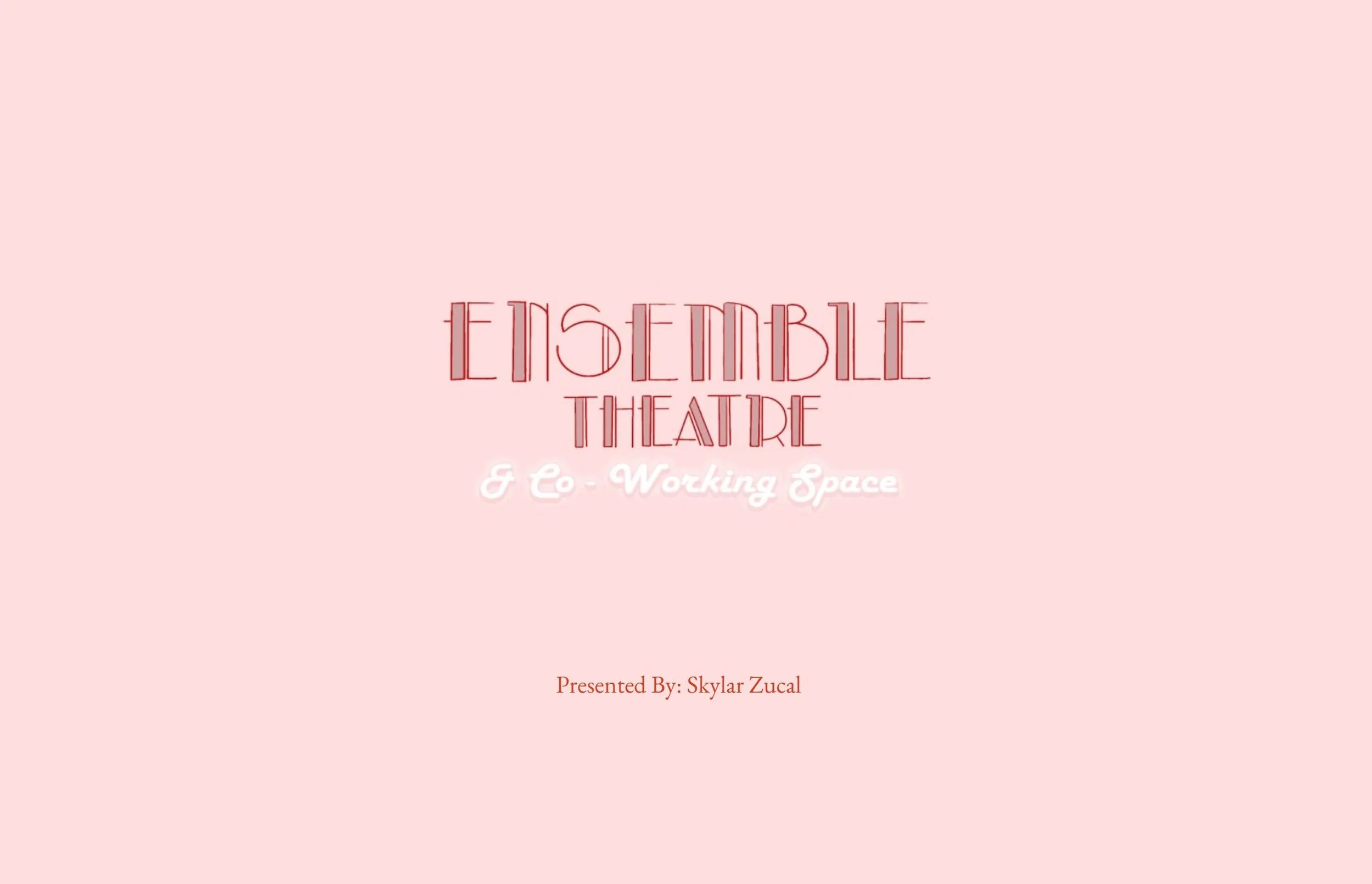
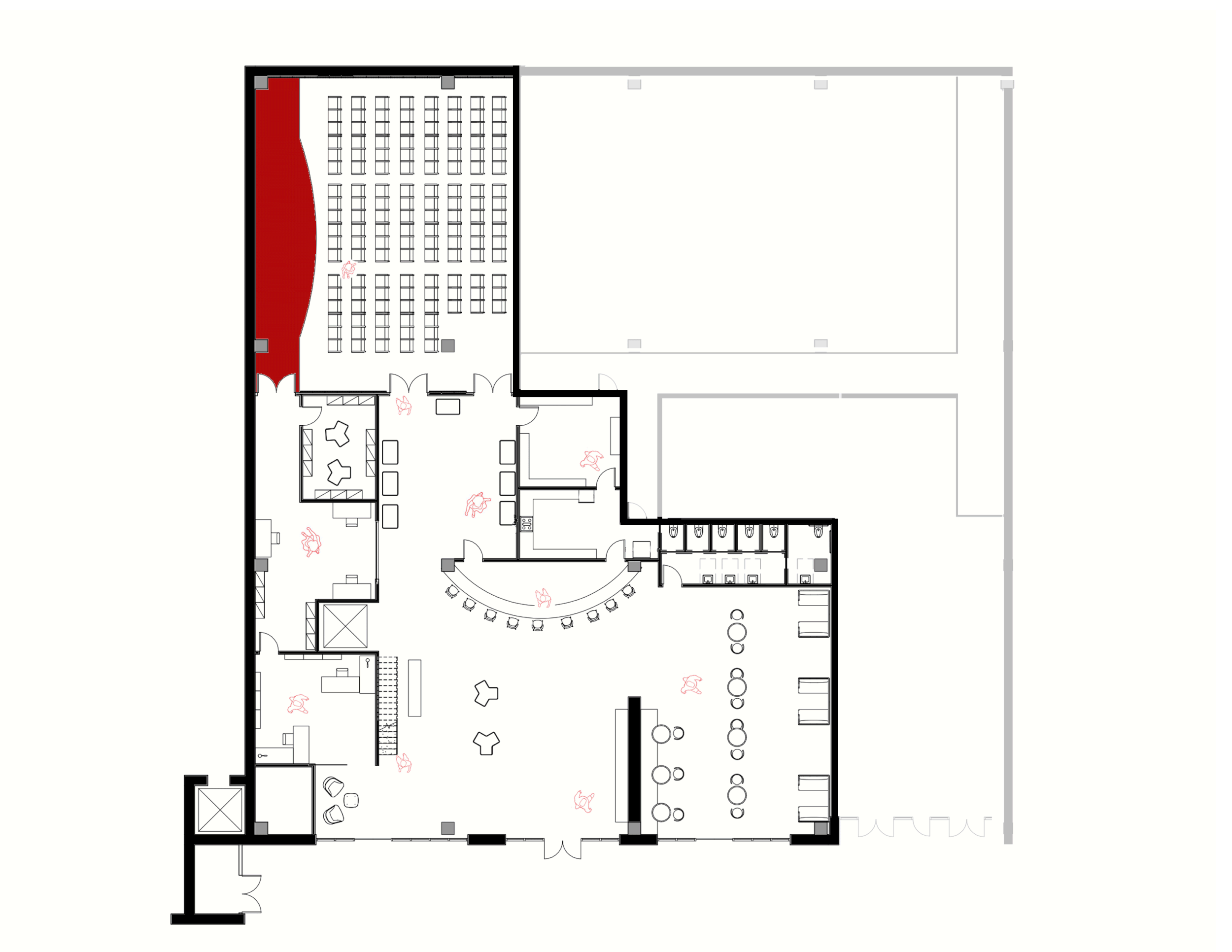
Megan Stalker
Ensemble Theatre
My project for the new Ensemble Theatre design at Pinecrest Mall acknowledges the lack of diversity and transportation accommodations within the existing site and offers a more inclusive environment through the design of a community theater that encourages all visitors to feel free to explore and interact with the space. Visitors ot Pinecrest are encouraged to come to the restaurant inside of Ensemble Theatre during the day, enjoy a night out attending a performance, or chat with friends in the outdoor seating area after a show. The final design includes the use of custom thresholds that were created with inspiration taken from my proto-model, as well as the thresholds that “naturally” exist within almost all theaters.





Emily Sullivan & Katelyn Schlotter
Center for Autism
The Center for Autism is designed for students of all ages spanning a wide spectrum of Autism. In our research, we found that every individual with Autism is unique and reacts differently to sensory stimuli. We also learned that students with autism may have a hard time associating and adapting to their surroundings. We asked ourselves how we can design around this knowledge? We did this by researching biophilia. Within our research, we decided to create spaces around the different biomes of the world. This will help students feel calm and want to learn. It will also help them associate the rooms and activities to each biome, making scheduling easier to understand. We chose the biomes based on the overall feelings and stimuli that they evoke. We wanted to ensure we were categorizing the biomes to fit the rooms for their intended use.

